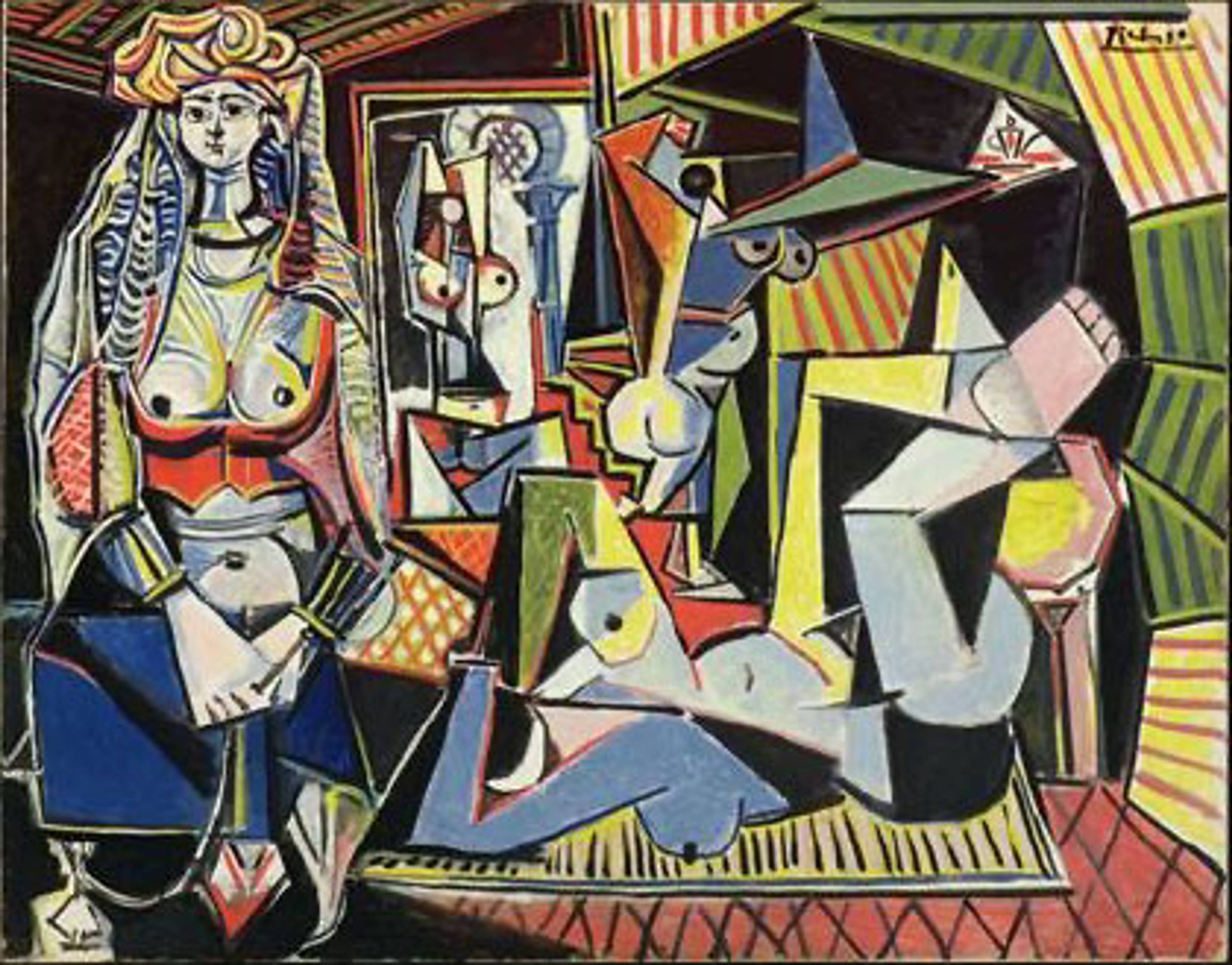Museum Berggruen at the Nationalgalerie—Staatliche Museen zu Berlin Presents the Special Exhibition Picasso & Les Femmes d’Alger May 7 – August 8, 2021
Exhibition Reunites Paintings and Studies from Picasso’s Transformative Variations on Delacroix (1954-55), Juxtaposing Them with the Original (1849 Version) and with Contemporary Artworks
Exploring Pablo Picasso’s creative process at a major turning point for his art and his world—and examining the meaning of this epochal achievement from a contemporary perspective—Museum Berggruen at the Nationalgalerie—Staatliche Museen zu Berlin will present the exhibition Picasso & Les Femmes d’Alger, on view exclusively from May 7 through August 8, 2021. Organized for the Museum Berggruen by Chief Curator Gabriel Montua with Co-Curator Anna Wegenschimmel, the exhibition will present the largest group of Picasso’s paintings of the Les Femmes d’Alger series to be seen in Europe since 1956; with the Museum Berggruen’s own canvas (known as Version L) reunited with others on loan from public and private collections around the world.

Pablo Picasso, Les Femmes d’Alger (Version O), 14.2.1955
Oil on canvas, 114 × 146,4 cm,
Private Collection © Bridgeman Images/Succession Picasso/VG Bild-Kunst, Bonn 2021
Addressing the significance of the exhibition, Gabriel Montua said, “Picasso’s Les Femmes d’Alger series, produced in the winter of 1954/55, marked a watershed moment in his oeuvre. It addressed many earlier issues in his painting. At the same time, the qualities that will become characteristic of Picasso’s final creative period are apparent in his free adaptation of an Old Master as a series of several paintings, sometimes executed very rapidly. Only by viewing as many of them as possible at once can we experience the full potential of the group, as if looking over Picasso’s shoulder as he worked.”
Picasso created these works as a set of variations on the theme of Eugène Delacroix’s Orientalist painting Femmes d’Alger dans leur appartement (to be shown in the exhibition in its 1849 version, from the Musée Fabre in Montepellier), as opposed to the prototypes of Jean Auguste-Dominique Ingres (whose engraving based on the famous Grande Odalisque is featured in the exhibition). In a time when abstraction had become dominant and few of the world’s leading artists (with exceptions such as Willem de Kooning and Francis Bacon) were depicting the human form, Picasso experimented with stretching, exaggerating, and twisting the anatomies of Delacroix’s figures in their contrasting poses. The exhibition connects Delacroix’s preference for color and atmosphere over contours of the body through the odalisques of Henri Matisse, Picasso’s long-time friend and rival, appearing in the gallery room next to Delacroix. By exploring these influences, the exhibition reflects Picasso’s breakthrough in both color and form in the Femmes d’Alger series and his synthesis of the strands in the history of Western painting—design versus effect.
Implicated in this choice of subject were the critical changes he was experiencing at this moment in his private life (the beginning of his relationship with his future wife Jacqueline Roque), the art world (the death of Henri Matisse), and politics and society (the onset of Algeria’s war of independence). Adding to an understanding of Picasso’s response to these changes, the exhibition includes a watercolor, lithographs and rare drawings from Musée Picasso Paris that were a part of his process in creating Les Femmes d’Alger. To contextualize the series and confront it with present-day views informed by feminism and post-colonial thought, the exhibition also includes works by contemporary artists of Algerian descent Zoulikha Bouabdellah, Halida Boughriet, and Djamel Tatah.
Nicolas Berggruen, Chair of the International Council at the Museum Berggruen, said, “I congratulate the Nationalgalerie—Staatliche Museen zu Berlin, Gabriel Montua, and Anna Wegenschimmel on their extraordinary achievement in organizing Picasso & Les Femmes d’Alger. Not content to have accomplished a rare reunion of so many of these formidable artworks—among them the Museum Berggruen’s own Version L, the only painting in the series that residents permanently in Germany—the curators have expanded on this core group with exceptional scholarship and critical acumen. This is a model of how an exhibition can be artistically profound, historically illuminating, intellectually challenging, and vibrantly relevant.”
The exhibition will be accompanied by a fully illustrated, 192-page catalogue in German, English, and French published by Hirmer Verlag, including essays by Gabriel Montua and Anna Wegenschimmel with prefaces by Nationalgalerie’s Director Joachim Jäger and art historian Olivier Berggruen, and previously published texts by the American art historian Leo Steinberg (1920–2011) and the Algerian writer Assia Djebar (1936–2015).
A series of conversations and digital content will be produced throughout the summer together with the Berggruen Institute, an exhibition programming partner.
The exhibition is made possible through the generous support of the Berggruen Family and the Nicolas Berggruen Charitable Trust.
Please do consult the Museum Berggruen website for updates related to possible COVID-19 related delays to the exhibition schedule and programming.